Iceland abounds with natural wonders. It sits at the meeting point of the North American and Eurasian continental plates. The plates are slowly moving apart, which means that the country is slowly, by just a few centimeters per year, getting wider. The rift runs diagonally from the southeast corner of the country to the northwest and makes Iceland a hotbed of weird geological activity. Geysers shoot water over 70 feet in the air, geothermal hot springs power cities and create heated soaking pools, earthquakes happen every day, and volcanoes explode and form underground caves and black sand beaches.
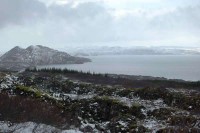 Many of Iceland’s most beautiful and unique natural wonders are located in close proximity to Reykjavik, so if time or weather conditions (the Ring Road, the road that circles the country becomes impassible in parts during winter months) keep you from seeing the whole country, you can still experience the range of Iceland’s beauty close to your home base.
Many of Iceland’s most beautiful and unique natural wonders are located in close proximity to Reykjavik, so if time or weather conditions (the Ring Road, the road that circles the country becomes impassible in parts during winter months) keep you from seeing the whole country, you can still experience the range of Iceland’s beauty close to your home base.
Near Reykjavik
The Golden Circle
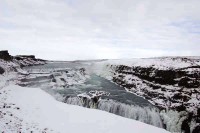 The Golden Circle is the name given to the route that connects three of Iceland’s most famous attractions – Geysir, Thingvellir, and Gulfoss. The route can be covered almost all year round in just a few hours.
The Golden Circle is the name given to the route that connects three of Iceland’s most famous attractions – Geysir, Thingvellir, and Gulfoss. The route can be covered almost all year round in just a few hours.
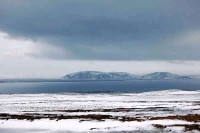 Starting from Reykjavik, head first to Thingvellir National Park. In summer it’s a great place to camp, horse-back ride, fish and swim. It’s the site of the world’s first Parliament, formed by Vikings in the 10th century. It’s also the place where you can actually see the plates moving apart. Walk between them in Almannagjá canyon or dive in the crack in some of the clearest water in the world at Silfra Lake.
Starting from Reykjavik, head first to Thingvellir National Park. In summer it’s a great place to camp, horse-back ride, fish and swim. It’s the site of the world’s first Parliament, formed by Vikings in the 10th century. It’s also the place where you can actually see the plates moving apart. Walk between them in Almannagjá canyon or dive in the crack in some of the clearest water in the world at Silfra Lake.
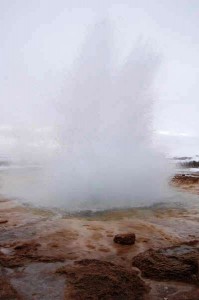 From Thingveller, continue on to Geysir. The original geyser and the one from which all others take their name, Geysir is actually dormant now. But Stokkur still regularly erupts, shooting scalding water into the air every few minutes as smaller hot pots hiss and boil nearby. Gullfoss, one of Europe’s largest waterfalls, is just a few minutes further. Take in the view from above, or make your way down the steeply inclined path for a closer look.
From Thingveller, continue on to Geysir. The original geyser and the one from which all others take their name, Geysir is actually dormant now. But Stokkur still regularly erupts, shooting scalding water into the air every few minutes as smaller hot pots hiss and boil nearby. Gullfoss, one of Europe’s largest waterfalls, is just a few minutes further. Take in the view from above, or make your way down the steeply inclined path for a closer look.
Seljandfoss
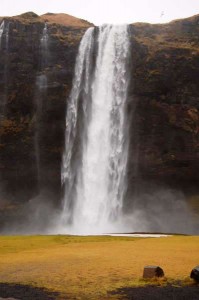 Not nearly as wide and powerful as Gullfoss, Seljandfoss is still worth a look. Located between Reykjavik and the small town of Vik, this majestically cascading waterfall is worth a visit for just how close you can get to the falls. Climb a few rickety steps and you can actually walk behind the falls, standing in a plume of mist as the water rushes down before your eyes.
Not nearly as wide and powerful as Gullfoss, Seljandfoss is still worth a look. Located between Reykjavik and the small town of Vik, this majestically cascading waterfall is worth a visit for just how close you can get to the falls. Climb a few rickety steps and you can actually walk behind the falls, standing in a plume of mist as the water rushes down before your eyes.
Black Sand Beaches of Vik
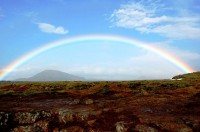 About 2 hours southwest of Reykjavik, the seaside town of Vik sits on some of the most beautiful coastline in Iceland. The black sand and volcanic ash stretches for miles from the Ring Road to the North Atlantic. The water is much too cold for swimming, but those who brave the icy winds will be rewarded with beautiful views of the black sand stretching as far as the eye can see.
About 2 hours southwest of Reykjavik, the seaside town of Vik sits on some of the most beautiful coastline in Iceland. The black sand and volcanic ash stretches for miles from the Ring Road to the North Atlantic. The water is much too cold for swimming, but those who brave the icy winds will be rewarded with beautiful views of the black sand stretching as far as the eye can see.
North Iceland
Lake Myvatn
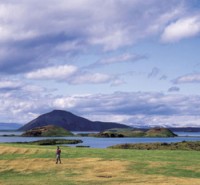 Lake Myvatn is in the north of Iceland, near the small city of Akureyri. The area around the lake is very geothermally active – visitors can hike to craters, soak in hot springs, and explore lava formations. The wetlands around the lake also make it a great place for those with an interest in bird-watching. Over 100 species of birds can be found in the area. The drive from Reykjavik is a long one; in winter, taking one of the regular flights that connect the towns is a safer bet.
Lake Myvatn is in the north of Iceland, near the small city of Akureyri. The area around the lake is very geothermally active – visitors can hike to craters, soak in hot springs, and explore lava formations. The wetlands around the lake also make it a great place for those with an interest in bird-watching. Over 100 species of birds can be found in the area. The drive from Reykjavik is a long one; in winter, taking one of the regular flights that connect the towns is a safer bet.
Dettifoss and Selfoss
Detiffos, in the northeast, takes the title of Europe’s largest and most powerful waterfall at over 100 meters wide and 44 meters tall. Selfoss waterfall is just a short drive away and the nearest town, Kópasker, is home to a large seal colony. Both make an easy day trip in summer months from the Akureyri area.
Northern Lights and the Midnight Sun
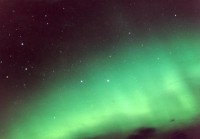 Iceland also experiences two seasonal phenomena – the Northern Lights and the Midnight Sun. The Northern Lights, or aurora borealis, occur on clear nights from October to March when solar activity creates curtains and waves of light in the night sky. Seeing them is never guaranteed, but many companies adept at tracking their appearance offer night excursions in hopes of viewing them. They are easier to see in less populated areas, but have occasionally been visible in Reykjavik city. In summer, Iceland experiences long hours of daylight, with the sun not setting until very late evening. In the far north, a true Midnight Sun is experienced on the summer solstice, when the sun does not set for 24 hours.
Iceland also experiences two seasonal phenomena – the Northern Lights and the Midnight Sun. The Northern Lights, or aurora borealis, occur on clear nights from October to March when solar activity creates curtains and waves of light in the night sky. Seeing them is never guaranteed, but many companies adept at tracking their appearance offer night excursions in hopes of viewing them. They are easier to see in less populated areas, but have occasionally been visible in Reykjavik city. In summer, Iceland experiences long hours of daylight, with the sun not setting until very late evening. In the far north, a true Midnight Sun is experienced on the summer solstice, when the sun does not set for 24 hours.


Comments